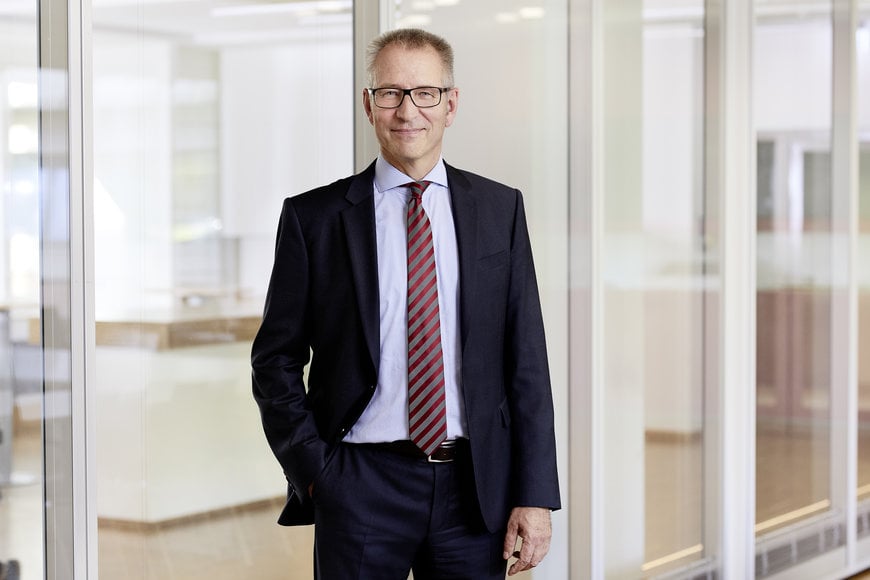www.industry-asia-pacific.com
09
'20
Written on Modified on
Interview with CEO Ulrich Balbach
Topic: "Leuze – Forerunner. Yesterday. Today. Tomorrow."

Leuze has recently changed its brand appearance. What are the reasons behind this?
For more than 50 years, Leuze has been developing efficient sensor solutions together with our customers worldwide, tailored to their requirements and in an industry that is constantly evolving. Your success is our motivation. And the Leuze brand is the promise by which our values, messages and emotions are conveyed. The new brand image conveys determination and passion for technological advancement and change.
The company is now simply branded ‘Leuze’. Are you no longer into ‘electronics’?
No, of course we are still very much into electronics – optoelectronics in particular is what we do. When the company was founded in 1963, the term ‘electronics’ had a very special meaning. That has changed. Nobody would question whether devices like our sensors use electronics. And from a practical point of view, ‘Leuze electronic’ is quite a long name that was often misspelled or shortened to ‘Leuze’ anyways. These are some of the points that prompted us to discard ‘electronic’ in our name. Above all, we think it’s important to have a clear identity.
The word ‘forerunner’ also stands out in the new image. What message are you trying conveying with this?
We actually consider ourselves to be forerunners for our customers. That goes well beyond being a pioneer. When we analyzed our technological milestones, it was obvious that we have been an innovative company for many decades. And we have always been a leader in terms of patents. For example, when you talk to one of our long-time developers, you’ll quickly find that we quite often spoke of the first, biggest, highest, smallest, or whatever. So for us this is quite an important revelation to recognize that we have been a forerunner in so many ways, without necessarily communicating it. And that’s what we want to change in the future.
So that’s why the complete slogan is “Forerunner. Yesterday. Today. Tomorrow.” Correct?
Correct. We want to be a beacon and show the way. This is also true for future-oriented topics such as Industry 4.0, IoT, or IIoT. This is why we thought really hard about this “forerunner” slogan, as you call it. Also the part “Yesterday. Today. Tomorrow." This shows that we look at the entire picture, that we fulfilled this promise in the past and can prove so, and that we will continue to live up to it in the future.
That sounds very ambitious. How do you make sure you will remain a forerunner for the long term?
The role of a forerunner changes over time. A forerunner 40 years ago is not the same as today. And of course this role can have a different meaning tomorrow or the next day. Unfortunately, I don’t have a crystal ball to predict the future. But we are a nimble company and will remain flexible enough to quickly develop further and adapt to new requirements. The slogan underlines our role as a forerunner and our adaptability.
Paving the way for someone else only makes sense if that party is willing to go down that path. How do you sell this to your customers?
We are a high-tech company, we are adept masters of our technologies, and we aim to continue on the same track. To design technologies that are useful to our customers is what we call innovation. That’s what we’re good at. Another one of our strengths is application know-how. How you use a sensor for a specific application – that is critical for us. This determines the design that follows. We also take pride in designing user-friendly products, not only in terms of user operation, but also with very unique designs. And finally, high integration capability with plug-and-play is also very important to us.
Let’s take a look forward: What will Leuze focus on in the next five years?
From a constructive point of view, we have the usual suspects: reduce manufacturing costs, use other materials, observe potentially new guidelines. Sustainability, reuseability, which means designing products in a way that allows us to recycle them in some shape or form. That is certainly one issue we will focus on more and more. Particularly important is the issue of connectivity, which we call ‘sensors communication’. What I mean by that is not only the design of interfaces, but the big picture. That means collecting data, over to the edge, up to the cloud, retrieve, and analyze. None of that would make any sense without the necessary sensor technology and its further development. And another trend that has and will always be there: everything is getting smaller. With optoelectronics, the issue is that you can’t scale it. That is why we always have a team of engineers working on miniaturization.
Many thanks Mr. Balbach.

